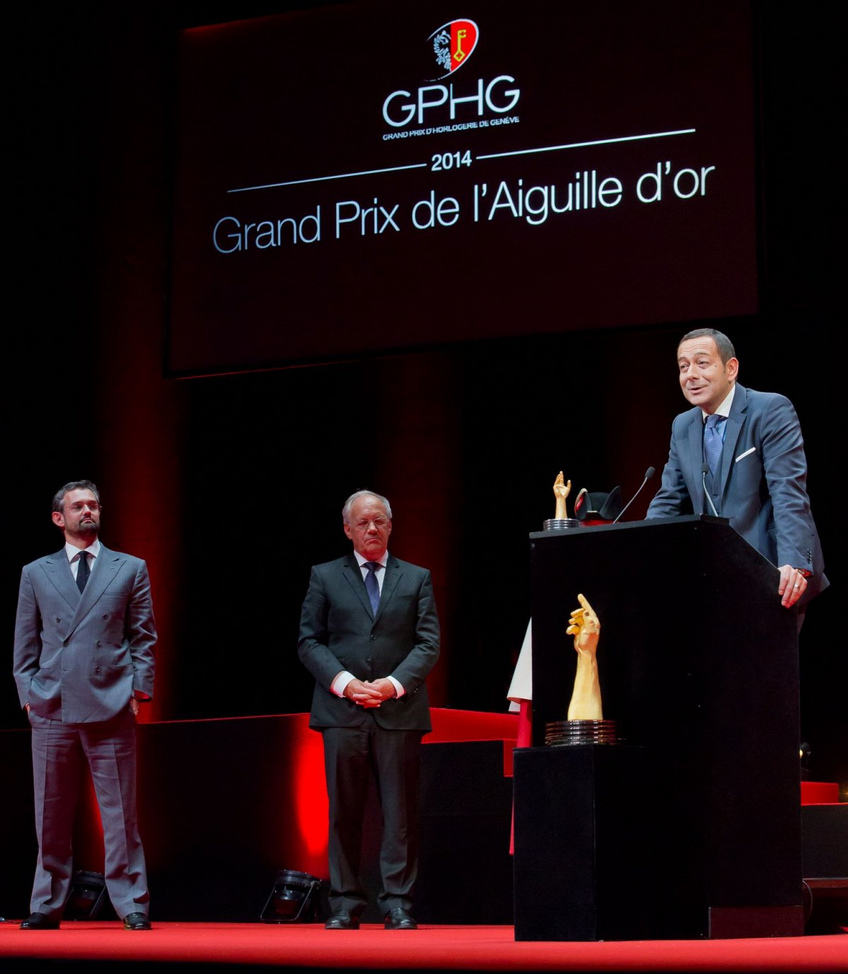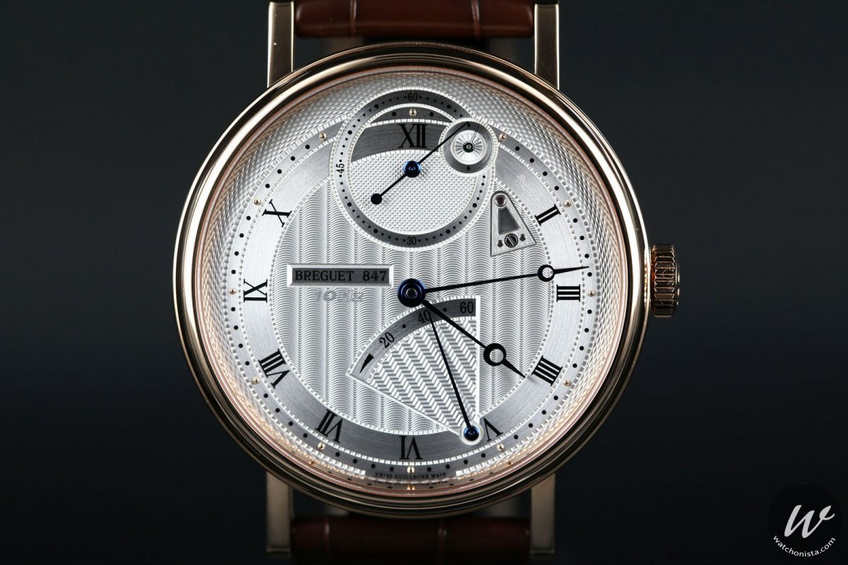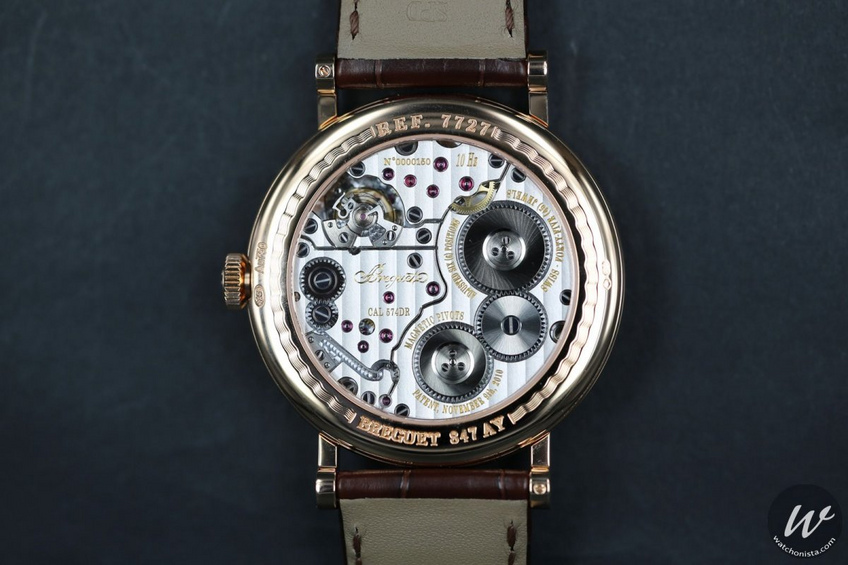

Breguet tames magnetism
Breguet is not a brand that would rely on its history only. Hence, it continues its quest for precision and invests in researching and developing new technologies and materials. Proof? The Breguet Classique Chronométrie 7727.
Breguet’s innovative spirit has contributed to creating several inventions that has helped time measuring science to improve. Its amazing 7727 piece was awarded the “Aiguille d’Or” (golden hand) at the 2014 “Grand Prix d’Horlogerie de Genève”.

Tamed magnetism
Over the last ten years, the brand has filed for the patent of more than 100 products. These are mostly related to improving chronometry and the regulation of striking mechanisms. This is a war against magnetism and watchmaking has always struggled to eliminate the magnetic flow of its timepieces since it is highly prone to impair mechanisms.

Breguet’s innovative approach, which included pushing analysis as far as possible, surprisingly created the now-famous magnetic pinion that turns while levitating in the watch without impairing the movements’ running in any way. To top it off, itis scratch-resistant. A masterstroke.
It all started with the patent of the magnetic pivot filed on November 7, 2010. Breguet wrote a new page in watchmaking history by blending the effects of magnetism to improve the precision and the reliability of its timepieces. The “Breguet Classique Chronométrie 7727” proves that the Maison met its objectives by reaching a new stage in its quest for perfection.
High frequency, silicon and magnetic pivot
The now rewarded watch is available in either pink or white gold and it is equipped with the 574DR caliber. This is a new hand-wound mechanical movement that makes the most of the manufacture’s recent innovations to reveal exceptional running results. This prowess was first made possible thanks to a 10 Hz frequency, which was used in the Type XXII chronograph for the first time. The frequency proved that it could improve the chronometric performances of the spring balance.
Breguet’s expertise in the use of silicon has allowed for a double balance-spring, a lever and a silicon escapement wheel to be specifically created for the “Classique Chronométrie”. These enabled the piece to reach high frequency and to obtain maximum precision.
The result is a power that reaches 830 microwatts, which is unheard of given that the better performing chronometers ranged between 300 to 400 microwatts. Thanks to the amassed energy in its barrels and to the high quality of its oscillator, the Reference 7727 guarantees a 60-hour power reserve despite its high frequency.
However, the major innovation of this “Classique Chronométrie” undoubtedly lies in the use of the magnetic pivot. Yet, there is a chance that the impact of this innovation won’t be fully appreciated until a few years from now. Thanks to the magnetic pivot, Breguet did not just sharpen its skills in controlling the negative effects of magnetism in a mechanical watch, but managed to tame them to improve the pivoting, rotation and stability of the balance-spring’s axis. By using two counter-pivots embedded with a particularly powerful (approximately 1.3 T) micro-magnet to each extremity of the balance’s axis, Breguet’s watchmakers have designed a dynamically stable system that auto-centers and auto-corrects.
Actually, the fact that one of the magnets has a higher magnetic force than the other creates a magnetic field gradient. Thanks to induction, a magnetic flow, generated on the inside of the balance’s axis, creates an attraction force. This keeps the axis’ extremity in permanent contact with the counter-pivot. In this “artificial gravity” position, the balance’s axis cannot tell the difference in the watch’s position and hence the pivoting conditions are always the same. If shock were to move the axis on the side, the system acts as an anti-shock device thanks to the reactive magnetic forces that are generated by the axis’ movement. This puts the axis automatically back to the center so maximum magnetic flow is restored.
More precise and aesthetically performing
Thanks to these innovations, the 7727 Reference has an average daily variation of -1/+3 seconds, which exceeds the COSC’s standard -4/+6 seconds by a long way. The difference of variation between the six positions is even more significant since it has been reduced to -2/+4 seconds daily (when wound to a maximum).

All in all, no less than six patents protect these technical feats that are the symbol of Breguet’s watchmaking excellence.
The aesthetics of this “Classique Chronométrie” is particularly refined in order to pay tribute to the major inventions housed in the 574DR caliber. The dial features an off-centered hour and minute circle and an indicator of small seconds at 12 o’clock. It also displays a power reserve indicator at 5 o’clock and an indicator of the 10th of a second at 1 o’clock with a lighter, patented silicon hand, which reduces inertia thus preserving the good functioning of the oscillator. The shock-resistant device is visible at 2 o’clock, as an allusion to Abraham Louis Breguet’s invention (1790) as well as to reduce the thickness of the timepiece inasmuch as possible.







